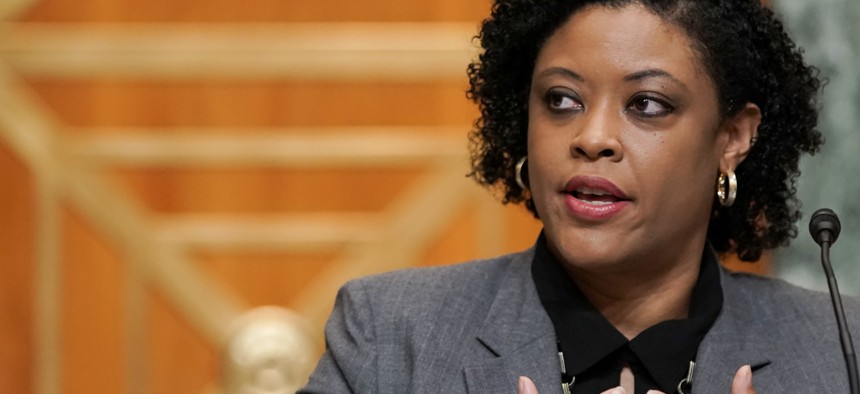White House starts the clock on zero trust adoption

A memo from OMB Acting Director Shalanda Young, shown here giving Senate testimony in June 2021, is kicking off a major effort to overhaul federal agency identity management and authentication practices. Getty Images
Agencies will have to meet specific zero trust security requirements by the end of fiscal year 2024 under a new policy memo, including updates to identity policies that will affect how federal employees access systems and applications.
The White House has released the federal zero trust architecture strategy, a government-wide plan for all agencies to better manage cyber risks and improve protections while meeting specific security goals and standards by the end of fiscal year 2024.
The Office of Management and Budget (OMB) released the strategy on Wednesday in a memorandum from Acting Director Shalanda Young which describes the process of shifting away from trusted networks as a "journey for the federal government" that will require "learning and adjustments along the way as agencies adapt to new practices and technologies."
One big adjustment is the planned elimination of rotating passwords with special characters within one year. The policy also calls for the authentication of users via connected devices and the use of phishing-resistant authentication on public facing systems that support multifactor authentication.
"A key tenet of a zero trust architecture is that no network is implicitly considered trusted," Young states in the memo, "a principle that may be at odds with some agencies' current approach to securing networks and associated systems."
The new requirements also include encrypting DNS requests and HTTP traffic, while subjecting all applications to rigorous testing and vulnerability assessments. The memo also flags some specific stumbling blocks to better agency cybersecurity, including the reliance on virtual private networks for application authentication and the continued use of unsecured intranets inside the dot-gov domain.
"This strategy is a major step in our efforts to build a defensible and coherent approach to our federal cyber defenses," National Cyber Director Christopher Inglis said in a press release accompanying the strategy. "We are not waiting to respond to the next cyber breach."
The memo instructs agencies to internally source funding or seek investments from alternative funds like the Technology Modernization Fund for fiscal years 2022 and 2023. Agencies must also submit budget estimates to OMB for fiscal year 2024 by late March.
Ross Nodurft, executive director of the Alliance for Digital Innovation and former head of OMB's cyber team, said in an email that Congress should "provide the necessary resources for agencies to make these much needed security investments this year and not wait until 2024."
Agencies have 30 days under the memo to designate zero trust implementation leads, who will coordinate with OMB on planning and implementation efforts. The White House is also requiring agencies to submit implementation plans within 60 days for fiscal years 2022 through 2024 to OMB and CISA.
"Zero trust is a key element of this effort to modernize and strengthen our defenses," CISA Director Jen Easterly said in a statement, adding that the agency "will continue to provide technical support and operational expertise to agencies as we strive to achieve a shared baseline of maturity."
CISA was also preparing to update the zero trust maturity model it released in 2021, according to Grant Dasher, a CISA identity and access management expert who spoke at an industry event on Tuesday. While CISA was not required to publish their updated maturity model under the cybersecurity order signed last year, the agency created the model to help speed up government efforts around zero trust.






